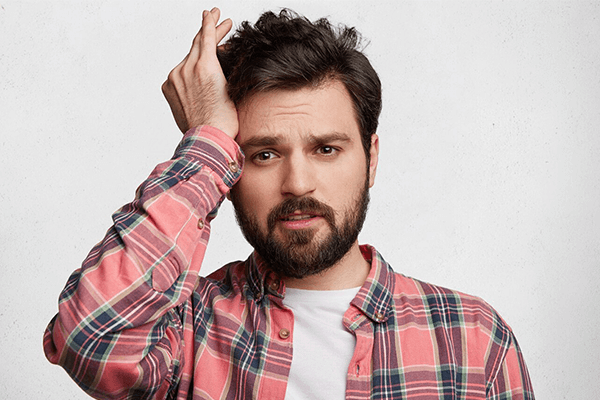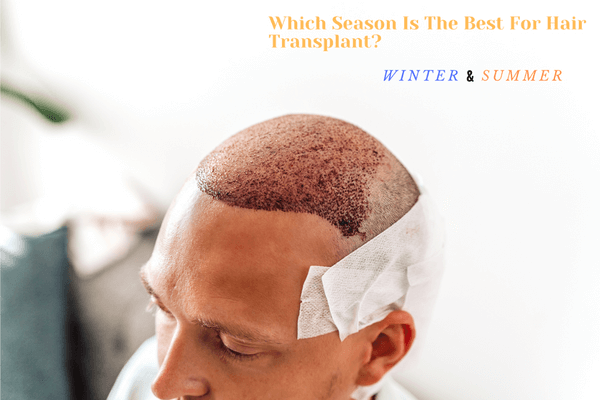
Is a Hair Transplant Painful?
Although there are many reasons for this, the biggest reason is the pain and suffering we may experience during and after the hair transplant procedure. For this reason, many people give up hair transplantation procedures or undergo the procedure in an extremely anxious and tense manner. At this point, we have created our content titled “Is a Hair Transplant Painful?” in order to resolve the questions in your mind a little bit. Thanks to this content we have prepared, you will have a prediction about whether hair transplantation is painful or painless, and at the same time you will have information about what to do for possible situations. We wish you all good reading and healthy days in advance.
Is Hair Transplantation a Painful Procedure?
One of the most curious questions in all hair transplantation processes is undoubtedly, does the hair transplantation process hurt or is it painful? In order to be more detailed and understandable on this subject, we have divided the hair transplantation process into 4 stages. Let’s take a look at the pain or pain experienced in these processes together;
Before Hair Transplant Surgery
Undoubtedly, one of the processes that cause patients to panic during the hair transplantation process is before the hair transplant operation. In this process, patients have many question marks in their minds. The most important of these is pain and suffering. Patients are not exposed to much pain or soreness before the hair transplant operation. The only pain or ache they feel is the numbing needle used to numb the scalp. Contrary to popular belief, this injection is a level of pain that is indistinguishable from a fly bite. After this process, the patient’s scalp is completely numb. This procedure is performed on both the donor area and the recipient area. The reason is to ensure that the patient does not feel pain during hair follicle extraction and transplantation. During this procedure, small fine injections are used to ensure that the drug fully affects the patient’s scalp. This process takes effect after 10-15 minutes.
During Hair Transplantation
Another phase that is thought to be painful or painful after hair transplant preparations is the hair transplant procedure. Since anesthesia is applied to the scalp before this process, you will not feel any pain or pain. For this reason, you never need to worry during this process. During this numb process, the hair taken from the donor area of the patient is transplanted to the recipient area. Thus, the hair transplantation process is completed painlessly and painlessly. A few hours after the operation, the patient wakes up and is taken to his/her room.
After Hair Transplant
We have learned that the patient does not feel any pain during and before the operation. But what about afterwards? Here is another point that patients worry and worry about is the postoperative process. In this process, all patients think that they will experience unbearable pain or suffering. But contrary to popular belief, this is not the case. Because in order for the patient not to feel pain or pain, painkiller supplements are given after 3 hours of numbness. Thanks to these supplements, the patient gradually gets rid of the feeling of numbness and returns to normal, and during this return to normal, he does not feel pain or pain thanks to the painkillers he has taken.
On the night of the operation, the patient sleeps comfortably during the night by taking painkillers again before going to bed. In the morning after the operation, many patients say that they do not feel any pain or soreness. But sometimes it can be minor, depending on the person. In this case, you can definitely take a low milligram painkiller. In this way, you will have a painless and painless process after the operation.
7 Days After Hair Transplant
The most important process in the hair transplant procedure is definitely the first 1 week. There is no need to use painkillers during this period. Because there is no pain or pain sensation to be experienced at this stage. Only to a very small extent, a feeling of tension may occur on the scalp. This feeling of tension can be relieved with treatments such as baby oil and coconut oil. For detailed information on this subject, you can take a look at our content called care and washing recommendations after hair transplantation. Although there is no pain or soreness during this process, itching or crusting may occur. You can also eliminate this situation with the necessary care.
Why do Aches and Pains Occur During Hair Transplantation?

During the hair transplantation process, some patients report pain and soreness in their scalp. There are many reasons for this situation. For example, when a person does not take the medications recommended by the doctor regularly and on time after hair transplantation, possible aches and pains may occur. In addition, if routine hair care is not performed after the operation and at the same time the doctor’s recommendations and warnings are not taken into account, unfortunately, some patients experience this situation. However, if the necessary precautions are taken, the patient does not experience possible pain or pain symptoms. There is no need to worry about this issue.
Does Possible Pain Affect Hair Transplant?
The pain is usually in the first weeks and does not bother you. However, if the pain persists for longer than 1 week or 28 days, you should definitely consult your hair transplant surgeon who performs hair transplantation at this point. Because there are many reasons for prolonged pain. The important thing is to analyze these reasons correctly and well and take precautions. Otherwise, the desired results cannot be achieved in hair transplantation procedures.
Does Hair Transplant Pain Status Change According to Techniques?
Another curious issue in hair transplantation operations is the changes in the level of pain and pain according to the technique. We have discussed 3 hair transplantation techniques for you on this subject. These are; Fue hair transplantation technique, Dhi hair transplantation technique and Fut hair transplantation technique. By reviewing the information below, you can have enough information about the subject.
Is Fue Hair Transplant Painful?
FUE hair transplant is one of the most comfortable and advanced techniques in recent times. The Fue technique, which gives very good results, is generally applied to individuals with much more hair loss. If we need to talk about the pain and pain level in this procedure; we can say that there is no pain rate. The reason for this is definitely the local anesthesia method applied. Because local anesthesia is applied to the donor and recipient area, the area is completely numb. Under the effect of this numbness, the donor areas are easily removed, kept in a container, waited to mature and then planted in the recipient area. All these processes are quite painless and painless.
Is DHI Hair Transplant Painful?
The DHI hair transplant technique, which is highly preferred today, is another hair transplantation technique that is performed comfortably. It is generally preferred in patients with a more minimal hair loss rate. The dhi hair transplantation technique, which has a very short duration, has the minimum level of pain and suffering. Because, as in the Fue technique, local anesthesia is applied in the DHI technique. In this way, since both the donor area and the recipient area are completely numb, no pain or pain is felt. Hair is taken from the donor area under local anesthesia and transplanted directly to the numb recipient area. In this way, all processes are completed painlessly and the patient can continue his/her social life in a healthy way.
Is FUT Hair Transplant Painful?
The FUT technique, which is a very old method, is not a very preferred method today. The main reason for this is the pain and soreness that occurs after the procedure. Although the FUT technique is applied, pain and pain sensitivity occur after the procedure because the donor area is directly cut, removed and made ready for transplantation. The FUT technique, which causes possible swelling and pain, is no longer preferred today due to a longer recovery period and a high postoperative scar appearance. Instead, Fue and Dhi techniques are applied.
What Should be Done to Relieve Possible Pain and Soreness After Hair Transplant?

Pain and soreness after hair transplantation sometimes occur due to health problems experienced by the person. Patients who encounter these and similar situations perform some procedures at home to relieve their pain immediately. However, these procedures often damage the donor and recipient area. Here we have prepared safe methods for you to relieve pain and suffering without damaging the donor and recipient area. By applying these methods, you can experience a healthy hair transplantation process by passing the immediate pain in the head area. These pain relief methods and recommendations are as follows;
- Painkillers
As always, painkillers are an important factor in relieving your pain during hair transplantation. Painkillers used correctly and on time relieve the pain that may occur after hair transplantation. When using painkillers to relieve pain after hair transplantation, they must be painkillers recommended by your doctor. Otherwise, it may cause unwanted health problems. - Cold Ice Packs
Cold ice packs, which provide a one-to-one effect on pain, have great effects in a short time. You can fill the cold ice packs, which do not harm the hair follicles due to their structure, with water and keep them in the fridge for a while. Cold ice packs waiting in the fridge during this process can be gradually applied to the scalp when they reach the required coldness. Applying it at certain intervals will help alleviate your pain by preventing possible cold cuts. - Scalp Care
Scalp care is a very important metric before and after hair transplantation. It greatly alleviates possible aches and pains, especially in the process after hair transplantation. Effective scalp care after hair transplantation, if done at certain routine intervals and with the hair care products recommended by your hair transplant surgeon, will both accelerate your healing process and relieve your possible aches and pains. - Comfortable Clothes
It is always a great advantage to wear comfortable clothes after surgery. Especially after the hair transplant procedure, wearing comfortable and loose clothes or clothes that are easy to put on and take off helps to end your possible aches and pains as it reduces the stress level in the donor and recipient area. For this reason, make sure to wear comfortable clothes after the procedure.
Tas Hospital is the Right Choice for a Painless Hair Transplant in Turkey
Thanks to Tas Hospital, a world brand in painless and painless hair transplantation procedures in Turkey, you can experience a perfect and healthy hair transplantation process. Tas Hospital, which offers excellent results with its professional and expert staff in hair transplantation procedures, ensures that you experience a painless and painless process in hair transplantation procedures thanks to its experienced staff. If you want to experience a painless and painless hair transplant in Turkey process, you can immediately contact Tas Hospital’s expert staff experienced in hair transplantation and make a preliminary consultation.
Frequently Asked Questions
There is no pain or soreness after hair transplantation. But there are some exceptions. At the beginning of these exceptions are features such as the health status of the person. The pains that occur for these reasons gradually disappear on their own within 1 week.
Since the donor and recipient area is completely numbed before the hair transplant procedure, no pain occurs. Therefore, there is no need to worry. You can have hair transplantation with peace of mind.
There is no such thing as the most painful part of hair transplantation. Because all procedures are performed under local anesthesia. For this reason, there is no pain or pain in any area where the procedure is performed.












